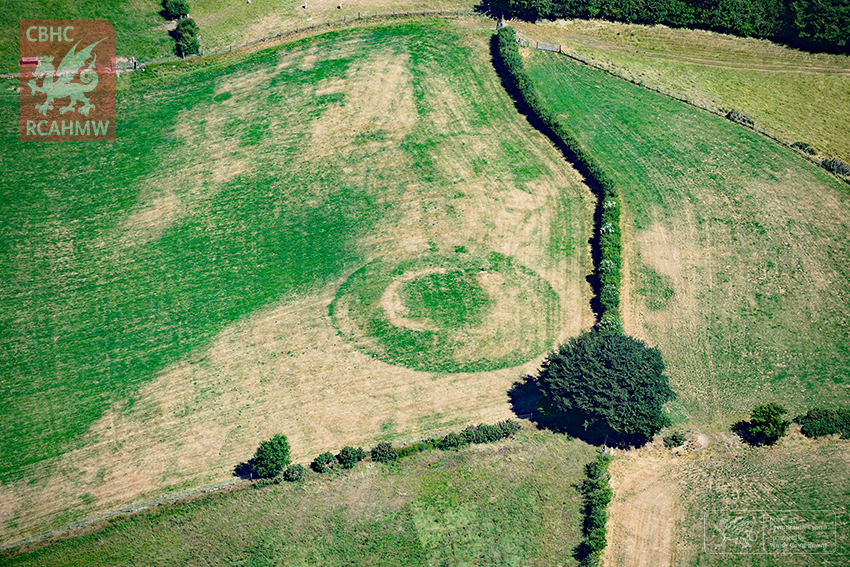The extremely hot, dry weather that spread across the globe in recent weeks has had some unexpected benefits in Wales, where the outlines of ancient civilizations are emerging from once-green fields.

Archaeologists and historians have watched in wonder as the drought-like conditions have revealed the clear outlines of long-vanished medieval castles, Roman forts and pre-Roman settlements.
WATCH: Archaeologists preparing to open sarcophagus unearthed in Egypt

While temperatures in Wales average about 19 C this time of year, they’ve spiked to above 30 C for days at a time this summer, and the vegetation on the surface has dried out as a result.
But depending on what those same fields were used for in centuries past, plants may have access to increased moisture and rich topsoil along ancient trench lines or less moisture where walls were once erected.
WATCH: Ireland drought reveals undiscovered Neolithic monument in farmer’s field

This diagram courtesy of the Royal Commission on the Ancient and Historical Monuments of Wales (RCAHMW) shows how the process works:
The recent developments have led to a scramble to record any new sites as quickly as possible before rain returns and the outlines become less visible.
“I’ve not seen conditions like this since I took over the archaeological flying at the Royal Commission in 1997,” said archaeologist Toby Driver in an emailed statement.
Driver has spent much of the past three weeks aboard a small plane, trying to capture these shadows of Britain’s past from the air.
“So much new archaeology is showing it is incredible,” Driver said.
“The urgent work in the air now will lead to months of research in the office in the winter months to map and record all the sites which have been seen, and reveal their true significance.”
READ MORE: Earthquake uncovers hidden temple at Mexico’s historic Teopanzolco pyramid
One surprise came in the Vale of Glamorgan, where in addition to an already-discovered prehistoric settlement, new crop marks emerged showing that a Roman villa once stood within the settlement’s modified ramparts. An early medieval cemetery also revealed itself in south Gwynedd.
The RCAHMW has been fielding media requests from all over the world as news of the crop circles (and squares) has spread, said a spokesperson.
A similar phenomenon is unfolding in Ireland, where a drone recently discovered the outline of a monument dating back to around 3000 BCE.
A persistent heat wave gripped large swaths of the Northern Hemisphere in late June and early July, smashing records in Canada, the United States, Europe and the Middle East. In Quebec, the heat is being blamed for the deaths of at least 70 people.







Comments